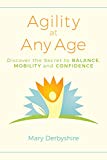 If you are like me, you resist change.
If you are like me, you resist change.
So do my ponies, Mo and Pip.
This is what happened to me over the weekend.
One morning I decided not to put the ponies’ breakfast hay near their gate, where I normally leave it. Instead, I put it closer to the fence that runs between their paddock and my mare, Asherah.
Asherah has been feeling a little needy these cold winter days and I thought that she would appreciate the ponies’ company.
But I didn’t expect this.
When I went to bring the ponies in for the night, they were not standing near the gate where they normally wait when it is time to come in. They were standing where I had left their breakfast hay.
When I clipped on their lead ropes to take them toward the gate, they refused to budge and even tried to go straight through the fence. It finally dawned on me that they were associating the location of their breakfast hay with the gate and the way out of the pasture.
What happened next floored me.
When I was finally able to lead them to the gate, Pip started bucking and ran through the open gate, dragging me behind him. Mo got in on the action and suddenly 500 pounds of angry miniature horses were dragging me up to the barn. They were furious that I had changed their routine.
This episode reminded me of Spencer Johnson’s book Who Moved My Cheese? but in this case, it was Who Moved My Hay?
It got me thinking about habit and change.
Why do we resist change so much?
Change is hard and it is scary.
When we change, we go from the known to the unknown.
We creatures, horses as well as humans, like to know where we are and what we are about.
We don’t like to swim in unchartered waters. It scares us. It unsettles us and it makes us feel not like ourselves.
This is where the power of habit comes in.
Your habits are who you are. I’m not only talking about habits such as brushing your teeth or nodding your head when you speak. I’m talking about a much broader interpretation of habit.
Habit covers a very wide range of behavior, including things like your tempo. For instance, do you rush or do you saunter when you move? Do you have the habit of taking a long stride when you walk or a shorter stride? Perhaps you have the habit of speaking very fast and loud? Habit is pretty much everything about you, but it is often almost impossible to see how large a role it plays in your life.
The amazing thing is that once you recognize a habit with attention and thought, you can stop the old habit and decide to proceed in a different way.
This process of managing change is a cornerstone of the Alexander Technique.
Developed by FM Alexander, the Alexander Technique is a mindfulness practice that teaches you how to move, think, and “be” better. You can learn more about the Alexander Technique here.
FM Alexander said, “ Change involves carrying out an activity against the habit of life.”
This little exercise illustrates a lot about habit and change.
Where you are now, lace your fingers like you would if you were going to pray or clasp your hands. Unlace them and then lace them again the exact same way.
Now re-lace them but move your fingers one finger over.
Your fingers are still laced but in a different way.
How does this feel?
For most, it will feel strange and different and maybe even wrong.
But look at your clasped hands or laced fingers. They aren’t “wrong,” they are just different.
You would probably never lace your fingers the second way because the first way is your habit and we almost always default to our habit.
Your habit felt right.
Any other way felt wrong.
We like to feel right.
What this means is that we do the same thing over and over again because it feels “right” without ever stopping to ask ourselves if it is right.
So back to Mo and Pip and the Who Moved My Hay episode.
What felt right to them was to the habit of eating their hay by the gate. What was out of their habit and what felt wrong and what ultimately made them very angry and upset was to eat their hay away from the gate. They were so habituated that they got confused and they mistook the fence for the gate.
Their reaction to the moved hay reminded me of the old saying ( attributed to Alexander Graham Bell) “When one door closes another door opens.”
But did you know that there is more to that quote?
The whole quote says “When one door closes another door opens, but we so often look so long and regretfully upon the closed door, that we do not see the ones which open for us.”
Our habits keep us looking “long and regretfully” at the closed door. We are so habituated to our past experiences that we are blind to new opportunities.
One ubiquitous habit is clenching or holding ourselves when we sit, stand or move.
Most of us use way too much muscular tension to get through the day. We may clench our jaw, hold our stomach in, and/ or brace our knees. Holding and bracing ourselves only makes our movement more difficult and can lead to pain and stiffness.
To change a habit you must first notice the habit. You must make it a priority to be aware of what you are doing and how you are doing it.
So, what are the habits that are preventing you from embracing change? Can you identify them? What if you were to ask yourself to stop and let go of the tension or intention around that habit? What happens next? Do you want to do something else? Do you want to choose something new?
I’d love to hear your thoughts.
 How You Move Matters! You can learn how to move better with my Amazon bestselling bookAgility at Any Age: Discover the Secret to Balance, Mobility, and Confidence. My book is illustrated with 40 videos that you access with your iPad or smartphone!
How You Move Matters! You can learn how to move better with my Amazon bestselling bookAgility at Any Age: Discover the Secret to Balance, Mobility, and Confidence. My book is illustrated with 40 videos that you access with your iPad or smartphone!
You can purchase it here.
 My name is Mary Derbyshire. I am a fitness and movement coach. My methodology is the Alexander Technique, a mindfulness practice that teaches you how to move better. When you move better you feel better and when you feel better your whole life improves! Let me know what you think or ask a question! I love to hear from my readers! Feel free to post in the comments section below and feel free to share this with your friends!
My name is Mary Derbyshire. I am a fitness and movement coach. My methodology is the Alexander Technique, a mindfulness practice that teaches you how to move better. When you move better you feel better and when you feel better your whole life improves! Let me know what you think or ask a question! I love to hear from my readers! Feel free to post in the comments section below and feel free to share this with your friends!
If you would like more information about the Alexander Technique then click here.
